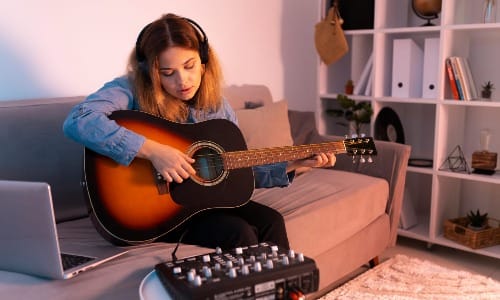Empowering Future Musicians: Strategies for Music Teachers to Inspire Creativity and Passion

As music teachers, you have the unique responsibility and privilege of shaping the next generation of musicians. The role goes far beyond teaching scales, chords, and techniques; it’s about sparking creativity, nurturing passion, and instilling a lifelong love for music. Empowering young musicians is both an art and a science, requiring strategies that go beyond traditional instruction. Here are some keyways to inspire creativity and passion in your students, helping them become not just better players, but true musicians.
1. Cultivate a Growth Mindset in Your Students
One of the most powerful tools you can give your students is the belief that they can improve through effort and practice. A growth mindset helps students see challenges as opportunities for development, rather than as roadblocks. Encourage them to embrace mistakes as part of the learning process and celebrate progress over perfection.
- Tip: When students struggle with a difficult piece or technique, remind them of their past progress and how much they've already improved. Use phrases like, “You’re getting better each time,” or “Every challenge you overcome makes you a stronger musician.”
2. Encourage Musical Exploration and Creativity
While mastering technique is important, fostering creativity is equally essential. Allow your students room to explore different genres, styles, and instruments. Let them improvise, compose, or experiment with sounds and rhythms. This not only makes music more fun but also helps them discover their unique musical voice.
- Tip: Dedicate a portion of your lessons to creative exercises like improvisation or songwriting. Encourage students to bring in a song or piece they love and explore it together. You can even set up “creativity challenges,” like composing a short piece using only three notes.
3. Incorporate Technology and Modern Tools
The digital age offers an incredible range of tools to help students connect with music in new ways. From music apps that enhance theory learning to recording software that allows students to hear their progress, technology can be a bridge between traditional music education and modern interests.
- Tip: Use apps like Mousiki or Soundtrap to let students create their own music tracks. You can also encourage them to explore learning platforms like Yousician for self-paced practice at home. Recording their lessons or performances can also give them a tangible way to track improvement.
4. Personalize Learning to Each Student
Every student is different. Some are drawn to classical music, while others thrive with jazz, pop, or rock. Understanding your students' individual preferences and talents allows you to tailor lessons in a way that resonates with them personally. This personalized approach not only keeps students engaged but helps them form a deeper connection with music.
- Tip: Have regular check-ins with your students about what excites them musically. Is there a particular genre or artist they love? Incorporate those elements into their learning path. If a student struggles with reading sheet music but thrives in ear training, adjust your approach accordingly.
5. Provide Performance Opportunities
Performance is a crucial part of a musician’s growth. Whether it’s a small recital or a large concert, giving students the opportunity to share their music with others builds confidence, encourages accountability, and inspires them to keep improving.
- Tip: Set up low-pressure performance environments, like informal studio recitals or playing for family and friends. You can also encourage students to post videos of their performances online or participate in local talent shows. For students who are shy, consider group performances to ease them into the experience.
6. Foster a Supportive and Collaborative Environment
Music can sometimes feel like a solitary activity, especially for solo instrumentalists. Building a sense of community within your classroom can help students feel more connected to their peers and their craft. Encourage group activities, collaborations, and peer learning.
- Tip: Organize group lessons, duets, or ensemble performances. You can also foster collaboration through group composition projects or musical games that involve teamwork. Creating a supportive, non-competitive environment helps students learn from one another and appreciate the collaborative nature of music.
7. Teach the Joy of Music, Not Just the Discipline
While practice and discipline are essential to mastering an instrument, it’s equally important to remind students why they fell in love with music in the first place. As a teacher, your enthusiasm and passion for music will be contagious. By balancing rigorous instruction with moments of joy and fun, you’ll help students develop a lifelong appreciation for music.
- Tip: Start or end each lesson with a “musical moment of joy”—this could be listening to a song they love, having a quick improv session, or playing a fun rhythm game. This keeps the joy of music at the forefront, even amidst more challenging learning moments.
8. Set Achievable Goals and Celebrate Successes
Setting clear, achievable goals helps students stay motivated and see their progress. Break down larger goals, like mastering a difficult piece or preparing for a recital, into smaller milestones. Each achievement, no matter how small, should be celebrated to keep students engaged and feeling accomplished.
- Tip: Create a goal-setting sheet for each student and review it periodically. Celebrate small wins, like nailing a tricky section or improving practice habits, by giving positive reinforcement or small rewards, like a certificate or a shoutout in class.

